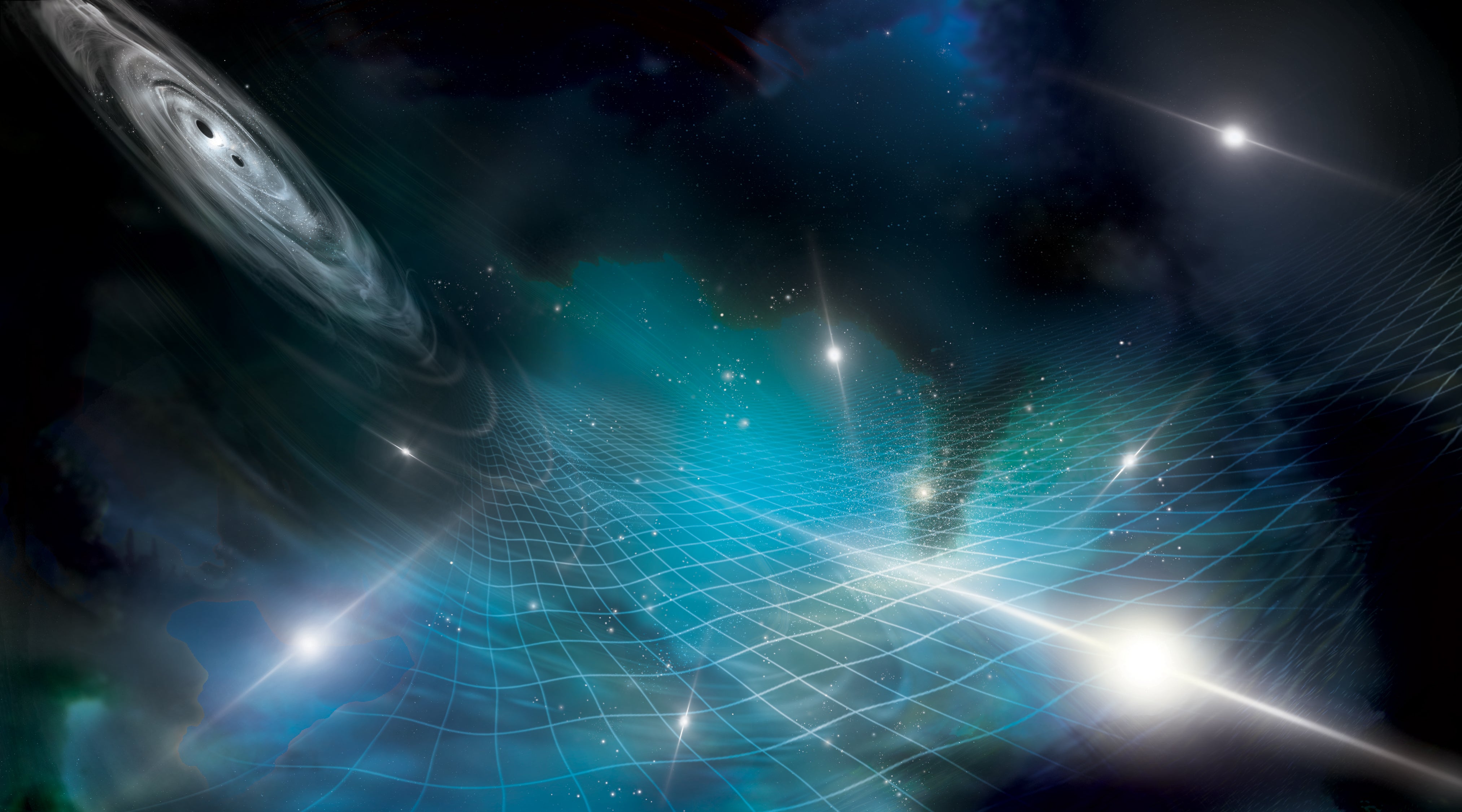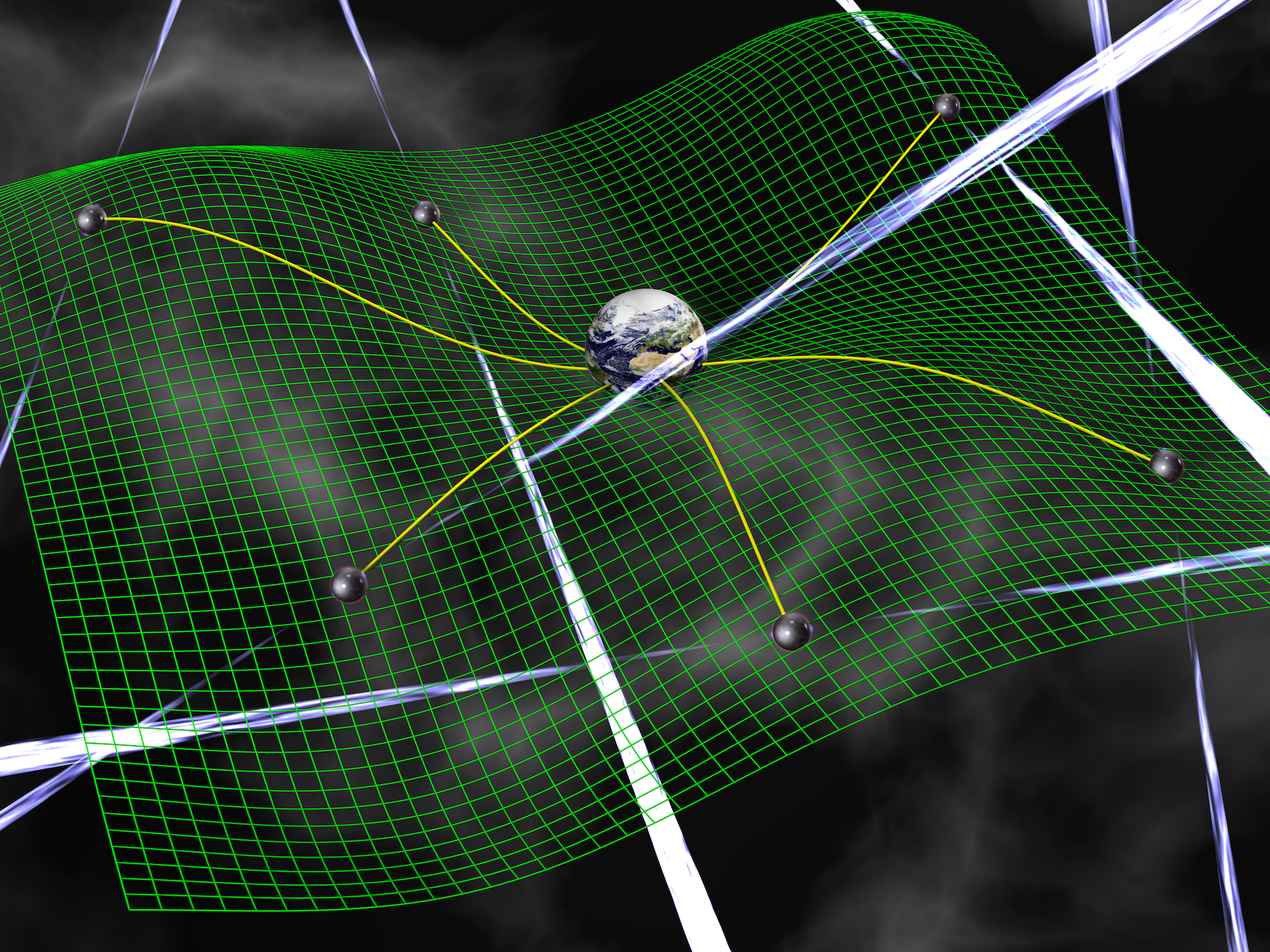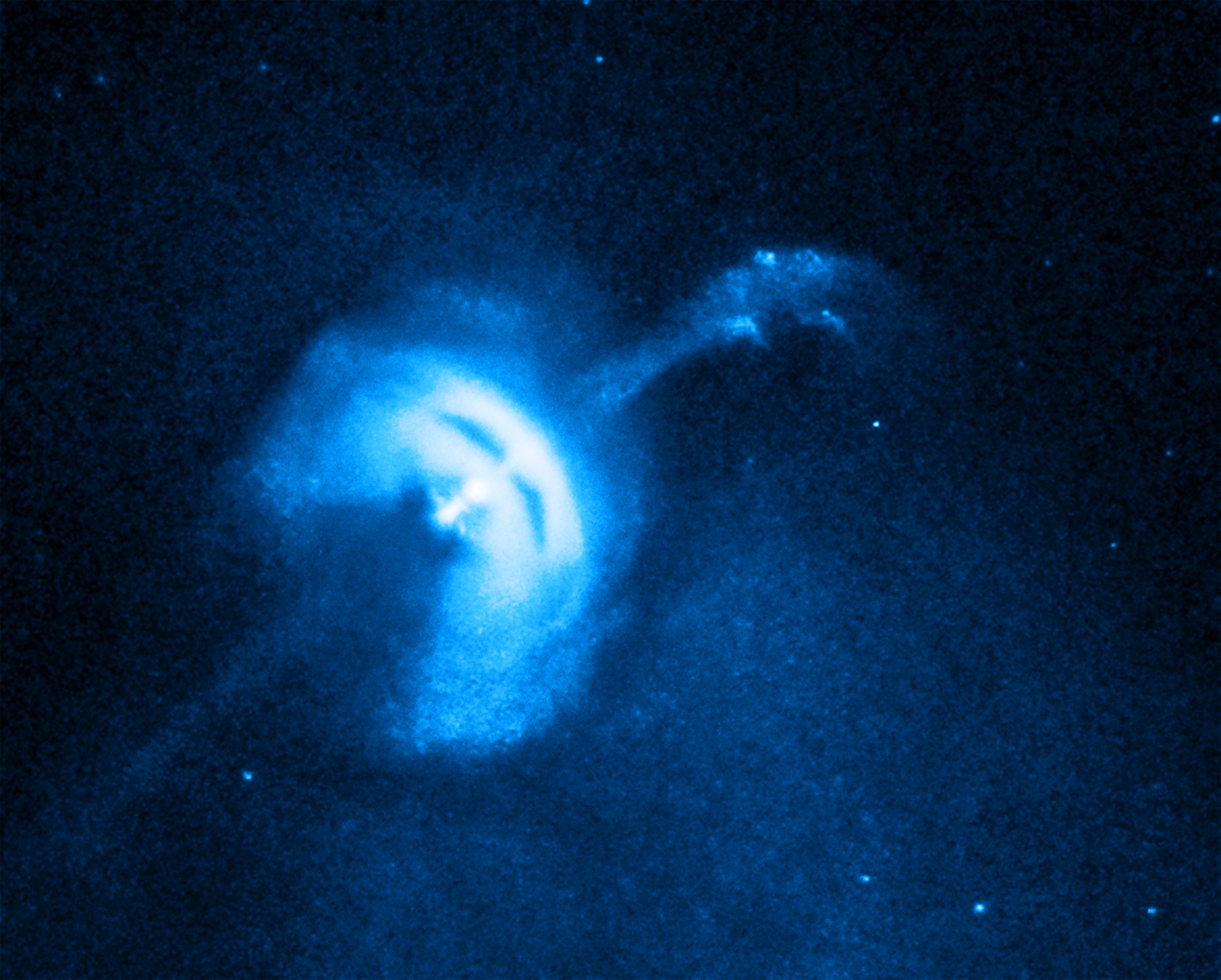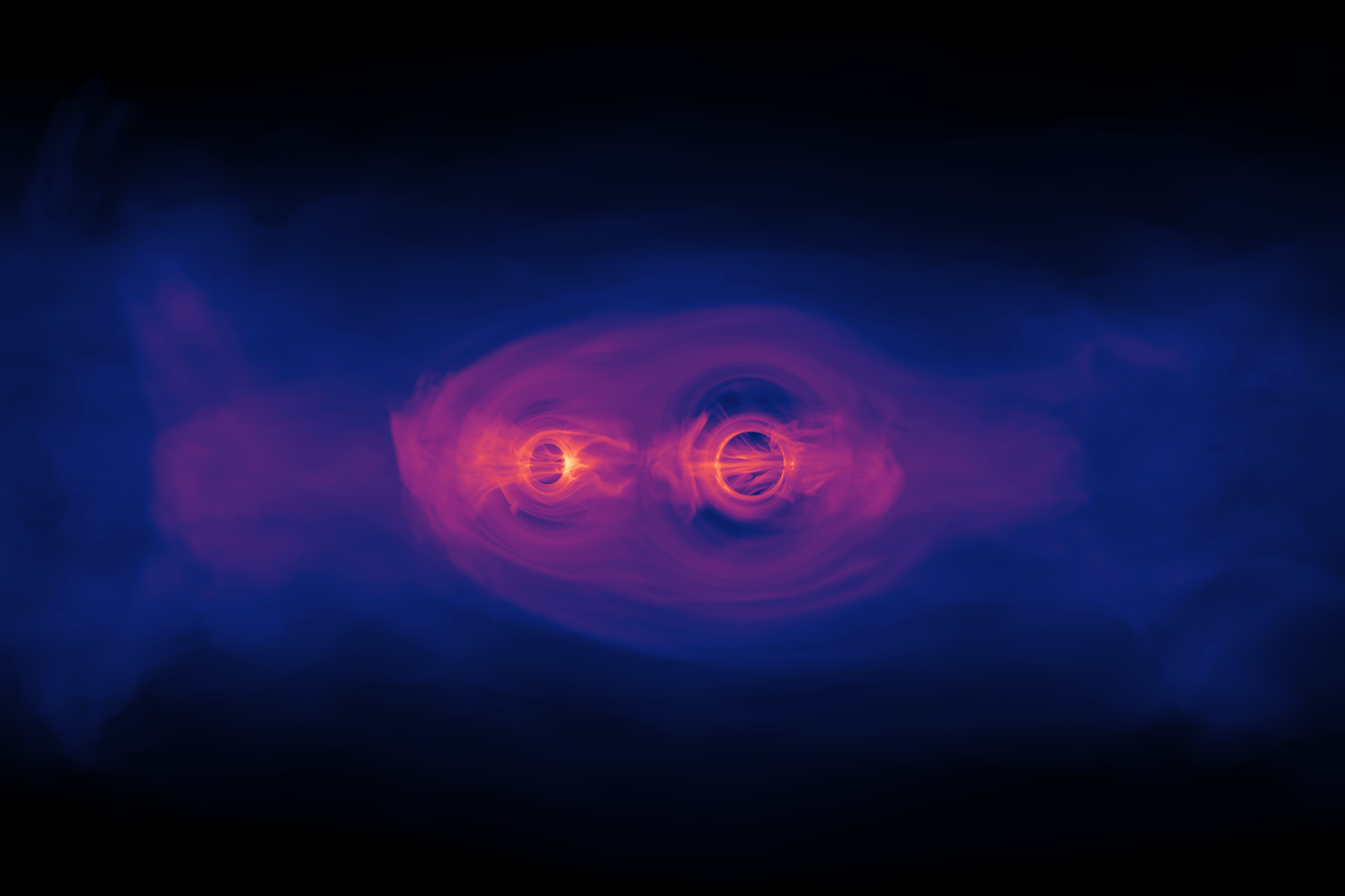
The universe is continuously rippling with gravitational waves, a 15-year survey has reported. Using pulsars as distant beacons and radio telescopes to plumb the galaxy, a massive collaboration of astronomers and physicists has found strong evidence of a gravitational-wave background undulating through the cosmos. A single wave may take years to decades to crest and fall.
The detection of these background gravitational waves is a long-awaited result. Scientists think these waves largely result from pairs of supermassive black holes at the centers of merging galaxies, with some contribution possibly from the Big Bang itself. The ability to measure these waves directly should inform scientists about the origin and history of the universe.
The results were published Wednesday in a series of papers in The Astrophysical Journal Letters and were based on collaborative efforts between the North American Nanohertz Observatory for Gravitational Waves (NANOGrav), the Physics Frontiers Center (PFC), researchers with the International Pulsar Timing Array, and international collaborators in India, Australia, Europe, and China.
“This is key evidence for gravitational waves at very low frequencies,” said Stephen Taylor, a gravitational-wave astrophysicist who co-led the research at Vanderbilt University in Nashville, in a statement. “After years of work, NANOGrav is opening an entirely new window on the gravitational-wave universe.”
A hum in space
When gravitational waves pass, they cause space-time, or the fabric of the universe, to ripple like a wiggling waterbed. Binary systems of massive objects like black holes and neutron stars create these waves. As the objects spiral toward each other and their accelerations increase, they send off energy as gravitational waves.
The first-ever detection of gravitational waves was reported in 2015 by researchers at the Laser Interferometer Gravitational-wave Observatory (LIGO), a set of mile-long observatories in Washington and Louisiana. But the signals observed by LIGO and subsequent similar facilities can only detect gravitational waves that resonate at high frequencies. This is because they are produced by relatively small objects — merging neutron stars or black holes born from single supernova explosions.
But scientists have long predicted another form of gravitational waves — a continuous hum produced by pairs of supermassive black holes, each with the mass of millions to billions of Suns, slowly spiraling toward each other. These emit lower-frequency gravitational waves than observatories like LIGO can detect. These stochastic, or background, gravitational waves, are rumbling from all over the universe at the speed of light, gently buffeting Earth from all directions.

“Like a huge ocean swell, the stars in our galaxy are all moving in concert to waves in space-time that take more than a decade just to complete one cycle of the wave,” says Kelly Holley-Bockelmann, a Vanderbilt astrophysicist who was not involved with the studies.
“What NANOgrav was looking for was the signature of the coalescence of those supermassive black holes at the center of massive galaxies,” says Gabriela González, an astrophysicist at Louisiana State University and member of the LIGO Scientific Collaboration, also not involved with the studies. The many signals come from different points in the universe and create a rumbling hum, like noise in a crowded room. “It’s not the individual signatures, individual signals as we see in LIGO, but all together, all mixed up,” González says.
Cosmic timekeepers
Previously when NANOGrav announced their 12.5-year data set in The Astrophysical Journal Letters in 2020, they caught a hint of a background hum. But it was faint and needed more data collection and analysis to confirm.
The long timescales of low-frequency gravitational waves make them tough to detect. Their signal must be picked up with an instrument larger than Earth. NANOGrav’s strategy is to turn to the vast cosmos and use pulsars within a section of the Milky Way Galaxy as a colossal gravitational-wave antenna. Pulsars, or rapidly rotating neutron stars, send out beams of radio waves like a spinning beacon in space. Every time the pulsar flashes its beam toward Earth, we detect a pulse of radio waves. These pulses are so regular they can be timed like the hands of a ticking clock.

But rippling gravitational waves can alter their timing, causing signals to arrive behind or ahead of schedule, allowing researchers to pinpoint a pattern associated with the waves. The change is very subtle because gravitational waves released by merging supermassive holes contract and stretch space-time by only one part in one quadrillion.
Researchers from all over the globe compiled data from 68 pulsars to create NANOGrav’s pulsar timing array. The more pulsars, the more sensitive the cosmic telescope is for sensing gravitational waves. And the new 15-year dataset has enough pulsars and observations for researchers to be confident of their detection. “The large number of pulsars used in the NANOGrav analysis has enabled us to see what we think are the first signs of the correlation pattern predicted by general relativity,” said Xavier Siemens, co-Director of the NANOGrav PFC and physicist at Oregon State University, in a statement.
There were four radio observatories involved in the effort, though two did the bulk of the work: the Green Bank Telescope in West Virginia and the now-defunct Arecibo Telescope in Puerto Rico. Two other radio arrays — the Very Large Array in New Mexico and the Canadian Hydrogen Intensity Mapping Experiment (CHIME) in British Columbia — also contributed observations.
Next Steps
The NANOGrav result shows that pulsar timing arrays can open a new window to the universe that had previously been inaccessible, allowing astronomers to hear even more of the gravitational-wave spectrum than before.
“If you think about the gravitational wave universe as a symphony, the first detection would be a piccolo, and this new find reminds me of a bunch of foghorns,” says Holley-Bockelmann.
Now, scientists are eager to learn more about what is causing the signals, which will help us chart the history of our universe and explore the events that have shaped it.

While supermassive black hole binaries are the obvious generator of swells on the cosmic sea, they have not been directly observed. The hum does indicate, however, that supermassive black holes in binary systems do close in on each other over time, a process astronomers weren’t entirely sure could happen.
“This finding gives us more confidence that our understanding of galaxy growth and black hole evolution are on the right track,” says Holley-Bockelmann. “However, this discovery may also be consistent with more exotic sources, like cosmic strings,” which are theoretical, incredibly dense strands of matter that could have formed as defects in the early universe. “We’ll need to keep observing to reveal the true nature of these gravitational waves.”









